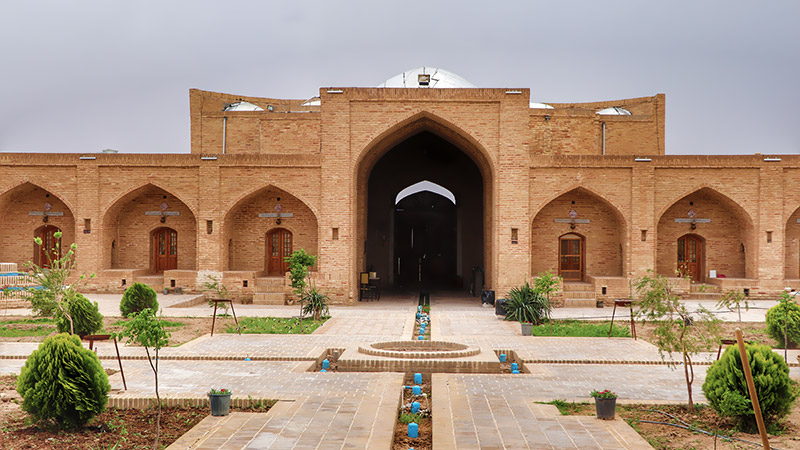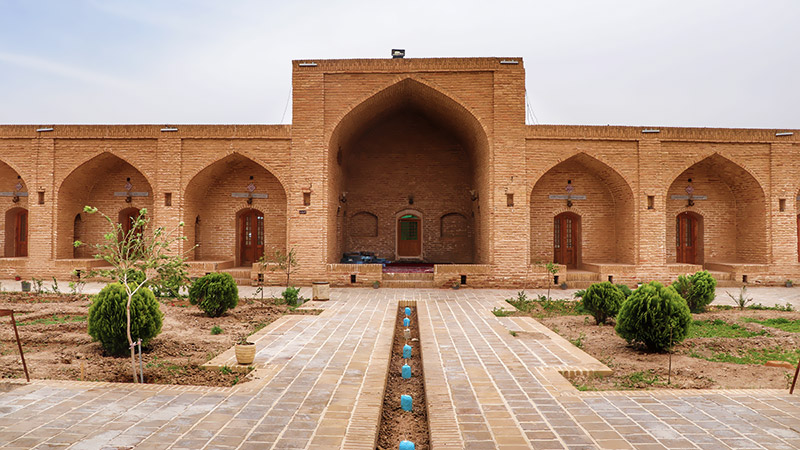 Signin with Google
Signin with Google Signin with Facebook
Signin with Facebook

 Places,Culture,History
Places,Culture,HistoryCaravanserai, the Miniature City of the World's First Explorers

The connection between travelling and caravanserai goes back to the Achaemenid era when Herodotus informs of 111 Chapar khanehs along the ancient royal route connecting Sardis to Susa. Chapar khaneh which refers to the postal service is the invention of Cyrus the Great and was the fastest communication system of this time. Chapar was a fast courier who was provided with a fresh horse and food at each station at specific distances in order to not linger for supplies or wait for his horse to rest.
So Caravanserais came to exist to answer the need of travellers along their long journey. Caravanserais had anything a small city has; that is why they were also called the "miniature city".
In the time of the Silk Road prosperity when Iranian Islamic art was flourishing and the power of the central monarchy in Iran was climaxed, a number of the best samples of Caravanserais were built throughout the path of incredible commerce between China and the west.

Caravanserai in the world's first traveller's diaries
Nasir Khusraw, the famous 11th-century traveller, who visited dozens of cities for seven years writes in one of his most popular "Safarnamas" or the book of travels, about the crucial role of caravanserais in crossing desert to the extent that without caravanserais and their water reservoirs would have been impossible.
Arthur Upham Pope, the American expert on Iranian art believed the structure of Caravanserai cannot be seen elsewhere in the world and it is the testimony of Iranian architecture's triumph.
Caravanserais transport visitors right to the ancient times, with images coming out of the "1001 Nights" tales and travel diaries of the first world explorers. Far from simply being a place to rest and trade, Persian Caravanserais were a strong impulse for exchanges between civilizations, bringing people and cultures together over thousands of years.
Hundreds of rooms around an opened courtyard
It's probably one of the oldest forms of the hotel. These large guesthouses have been built upon the same model: A large square or rectangular courtyard with several hundreds of rooms all around it. Caravanserais were roadside inns built all over Persia and beyond to welcome travellers engaged in long trips with facilities such as public baths, a qanat or a water reservoir, stalls, a mosque and a bazaar to exchange goods or buy food. Usually, these travellers were merchants and caravans. Most of them were following the long path of the Silk Road.
At that time, most merchants had been travelling with large caravans and animals. Thus, Caravanserais usually have a single entrance gate large enough to let these convoys enter. Inside, they would provide conveniences for the animals, such as food, water, and high platforms to unload the goods.

A cultural and information centre
As they intended to provide a shelter for the night and protect travellers from burglars, Caravanserais were mostly built outside of towns, ideally within a day's journey of each other, which is about 30 to 40 kilometres. A few were built inside the cities, but were generally smaller and thus known as "khan". Some caravanserais also had fortified walls. and a few were equipped with messenger horses: it shows their strategic role to spread information and news carried by travellers directly to the central power.
Indeed, caravanserais weren't simple hotels. They have always played a crucial role to develop cultural exchanges. So many international travellers gathered here, that they naturally became places to exchange ideas, stories, and experiences. Therefore, religions and beliefs, for instance, were transferred all along the roads through the mouths of travellers. Passengers from different places of the world would discover other cultures through various clothing, local foods, languages, customs, and manners. That's the reason why many cities which had caravanserai have become important cultural centres, such as Qazvin, Samarkand and Aleppo.

Famous Caravanserais in Iran
There are still numerous splendid caravanserais in Iran, which can be visited during the day, or used as accommodation as they have been turned into hotels or restaurants. Among the most famous and impressive ones, there is Zein-o Din Caravanserai, near Yazd: this 16th-century building was constructed under the reign of Shah Abbas I, who constructed 999 caravanserais over Persia. The Caravanserai of Bisotun is also one of these 999 buildings, located right under the splendid rock reliefs. In Isfahan, visitors can appreciate the elegance and refinement of the majestic Abbasi Hotel, a 300-year-old caravanserai renovated in the 1950s, which is now one of the most splendid hotels in Isfahan. And finally, the memorial of the Seljuk era in the 12th century and the most spectacular example of the caravanserai is Robat-e Sharaf caravanserai, known as the bricklaying museum in northeast Mashhad between Merv and Nishapur.
